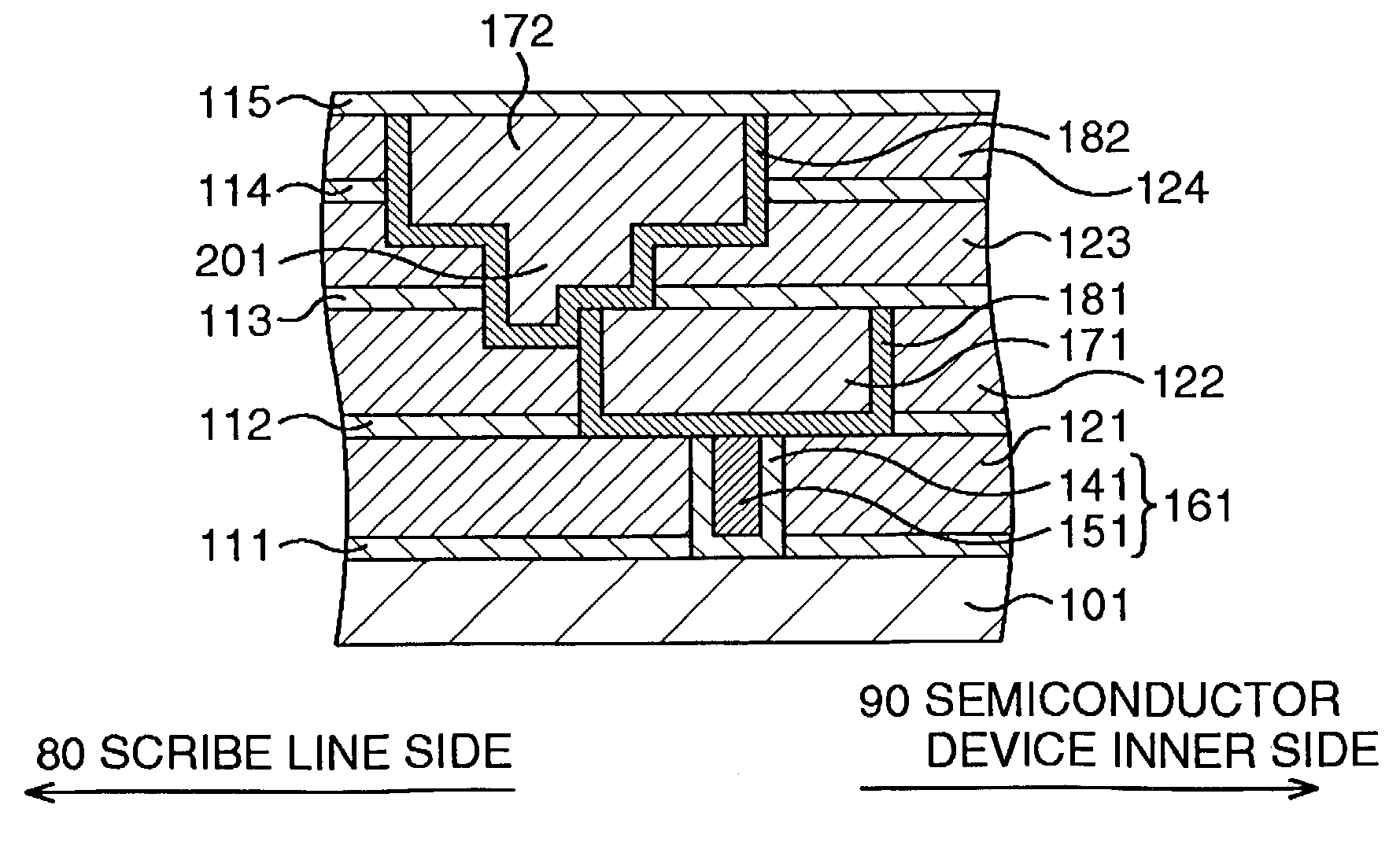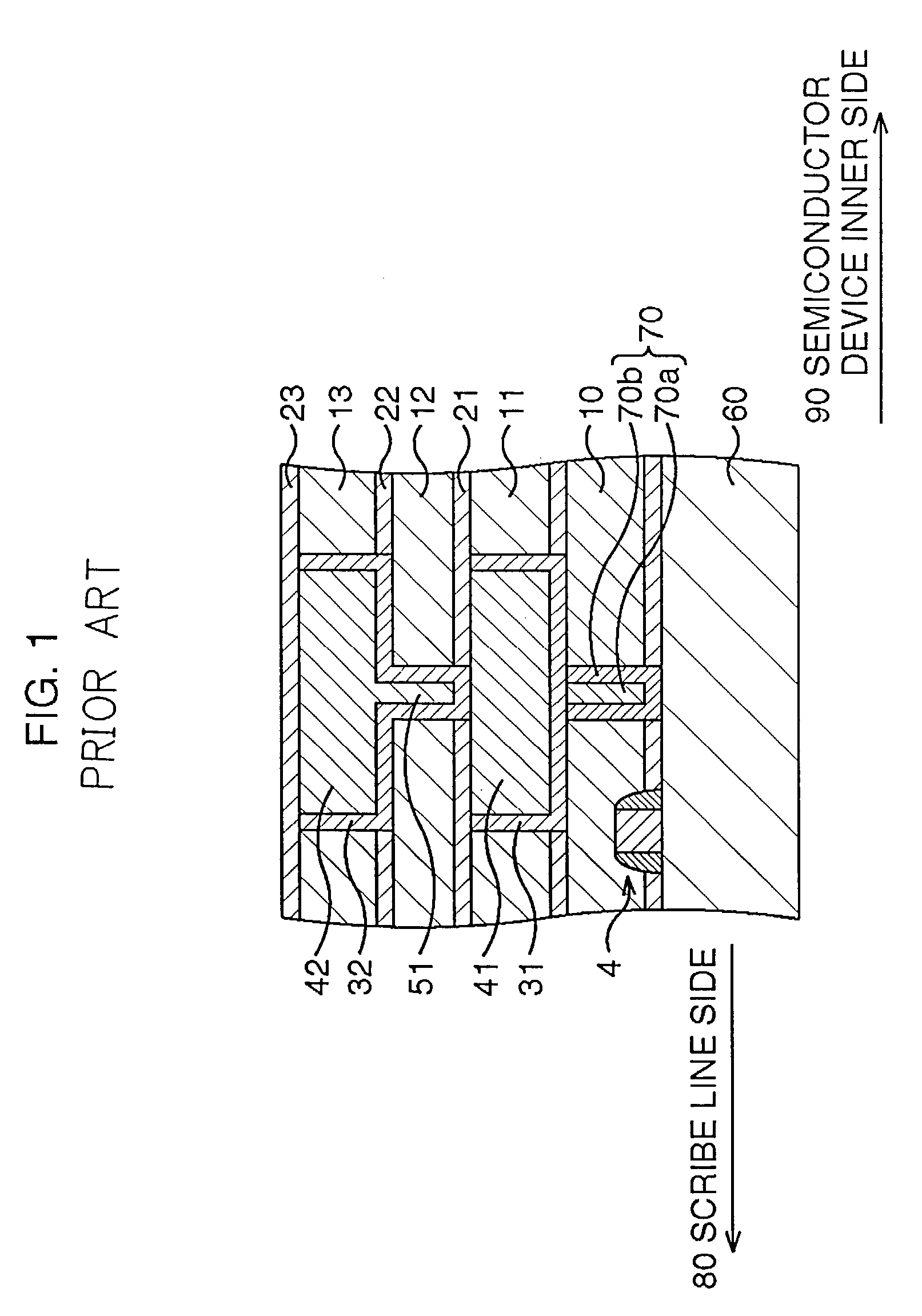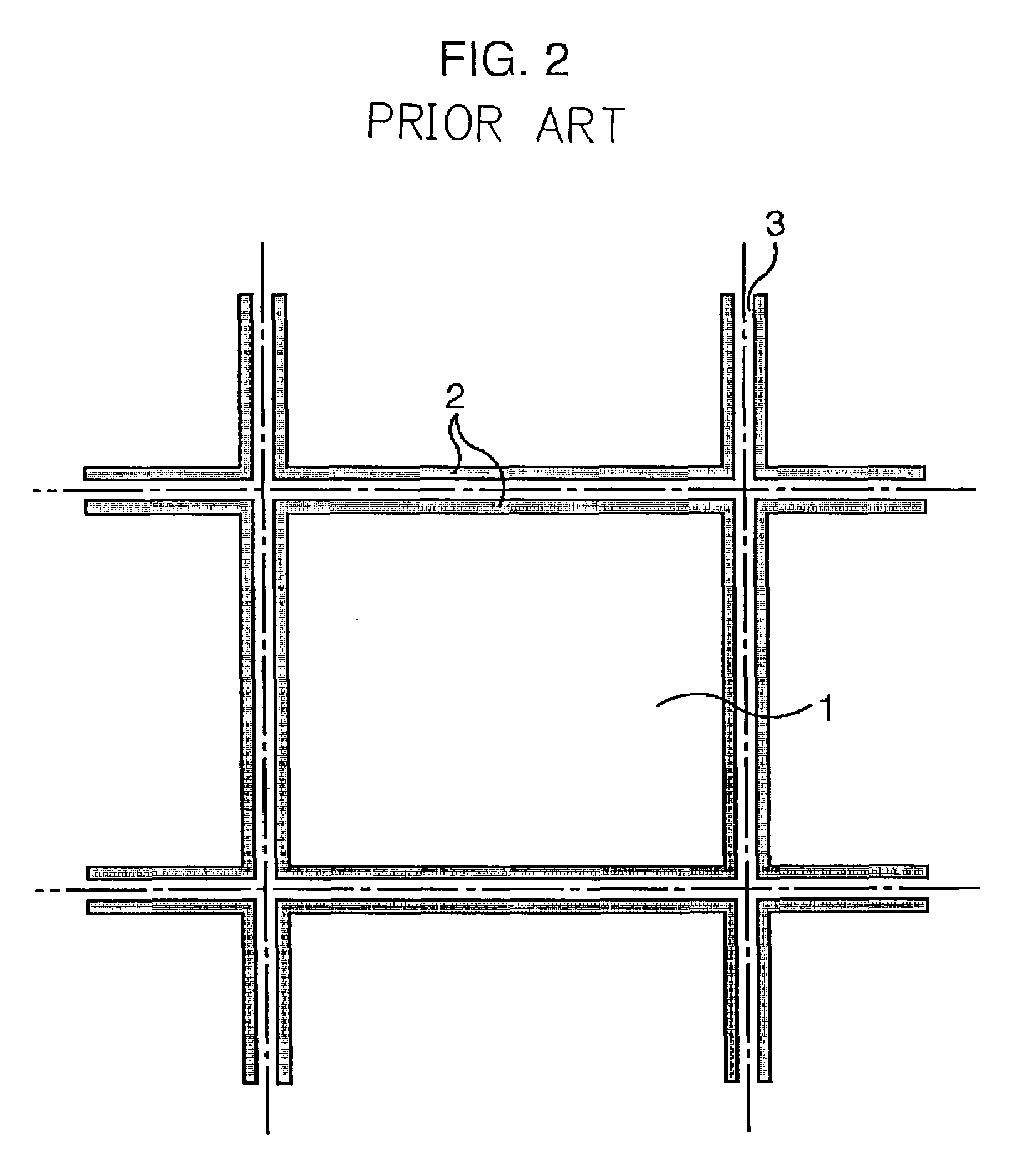Semiconductor device and method for manufacturing the same
a technology of semiconductor devices and ring rings, which is applied in the direction of semiconductor devices, semiconductor/solid-state device details, electrical equipment, etc., can solve the problems of limited wiring materials, method is not applicable to multi-layer wiring structures, and limit, so as to prevent moisture from entering the upper layer and enhance the adhesion between the upper end portion of the first barrier metal film and the upper layer
- Summary
- Abstract
- Description
- Claims
- Application Information
AI Technical Summary
Benefits of technology
Problems solved by technology
Method used
Image
Examples
first embodiment
[0059]FIG. 4A to FIG. 15B show steps of manufacturing a moisture-proof ring according to a first embodiment of the present invention when a dual damascene method is used. In the drawings, the left-hand side is a scribe line side 80, and the right-hand side is a semiconductor device inner side 90. Pointing a wall will show the whole space like a resist window 131a in FIG. 4A.
Step of Patterning Photoresist Film for Forming Contact
[0060]Referring to FIG. 4A, after formation of a not-shown circuit element on a semiconductor substrate 101, a silicon nitride film 111 and a silicon oxide film 121 are formed on and above the semiconductor substrate 101 to have thicknesses of 100 nm and 900 nm, respectively. To flatten the circuit element portion, the silicon oxide film 121 is polished using a CMP method so that the silicon oxide film 121 is formed to have a thickness of 600 nm. On the silicon oxide film 121, a photoresist film 131 is then applied, exposed to light, and further developed to ...
second embodiment
[0089]FIG. 16A to FIG. 17 show steps of manufacturing a semiconductor device according to a second embodiment of the present invention. In the drawings, the same reference numbers are assigned to portions corresponding to the previously described portions, and the description thereof is omitted.
Step of Etching Silicon Oxide Film for Forming Wiring
[0090]Referring to FIG. 16A, in this embodiment, after the formation of the structure shown in FIG. 13, the silicon nitride film 114 under the opening 124b in the silicon oxide film 124 and the silicon nitride film 113 under the opening 123a in the silicon oxide film 123 are etched under the condition that no overetching is performed.
[0091]As a result, as shown in FIG. 16A, the shape of the opening 124b is transferred, with the silicon oxide film 124 as a mask, to the silicon nitride film 114 to form an opening 114b. Concurrently, the silicon nitride film 113 is also etched with the silicon oxide film123 as a mask, so that the shape of the ...
third embodiment
[0097]FIG. 18A to FIG. 20 show steps of manufacturing a semiconductor device according to a third embodiment of the present invention. In the drawings, the same reference numbers are assigned to the previously described portions, and the description thereof is omitted.
Step of Patterning Photoresist Film for Forming Via Pattern
[0098]Referring to FIG. 18A, in this embodiment, a silicon nitride film 113, a silicon oxide film 123, a silicon nitride film 114, and a silicon oxide film 124 are formed on and above a wiring pattern 171 to have thicknesses of 70 nm, 650 nm, 70 nm, and 500 nm, respectively. On the silicon oxide film 124, a photoresist film 133 is applied, exposed to light, and further developed to form a photoresist window 133a which corresponds to a via pattern.
[0099]It should be noted that the photoresist window 133a is formed in such a manner that a first outer peripheral portion 205, covering a sidewall face on the outer peripheral side of a Cu film 191 being the wiring pa...
PUM
 Login to View More
Login to View More Abstract
Description
Claims
Application Information
 Login to View More
Login to View More - R&D
- Intellectual Property
- Life Sciences
- Materials
- Tech Scout
- Unparalleled Data Quality
- Higher Quality Content
- 60% Fewer Hallucinations
Browse by: Latest US Patents, China's latest patents, Technical Efficacy Thesaurus, Application Domain, Technology Topic, Popular Technical Reports.
© 2025 PatSnap. All rights reserved.Legal|Privacy policy|Modern Slavery Act Transparency Statement|Sitemap|About US| Contact US: help@patsnap.com



